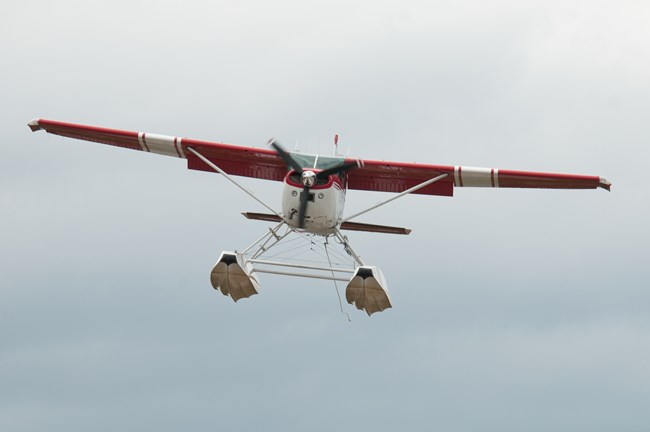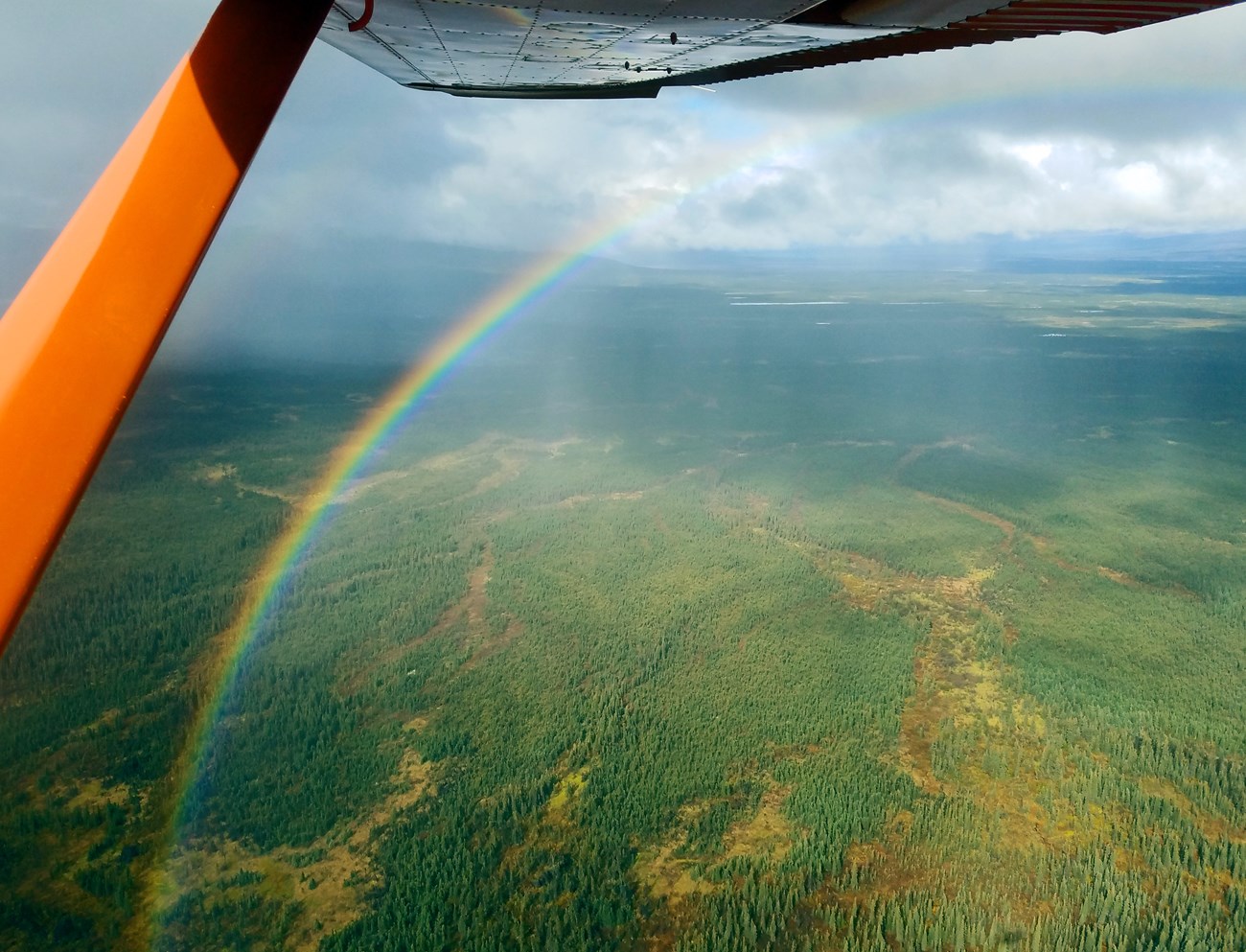Alaska is a large state, roughly twice the size of Texas, and twenty percent the size of the contiguous states. Many national parks in Alaska are spread-out, isolated, rugged, and removed from the road system. Most parks have no roads inside the park boundaries. Small planes are often the best way to get around, but flying has its risks. Aviation safety requires more than just a pilot’s skill–it takes all of us. Learn more about aviation to increase the safety of your next park flight.

NPS / Kara Lewandowski
Passenger Safety
To help park visitors access Alaska's parks, the National Park Service depends on a number of air taxi providers. These businesses are licensed by the Federal Aviation Administration (FAA) and some pilots have been flying in the region for many years. However, safety depends on more than just a pilot's knowledge. An aviation passenger also has rights and responsibilities with regard to safety.
Small aircraft are used throughout Alaska and passengers should take an active role to ensure everyone's safety by getting familiar with the details of their trip. As a passenger you should be willing to ask questions in a polite way if you feel uncomfortable about something or have additional questions. This idea can be intimidating, but if you are uncomfortable about something there is probably a reason. It is important to act on those feelings and voice any concerns. The pilot may have a simple answer that restores your comfort level. Asking a question may be all it takes to refocus on safety and avoid a mishap with the flight.
On the other hand, if the pilot's answer does not satisfy you, stick to your instinct and either insist of safe practices being followed, or postpone the flight. It is better to ask questions about a flight and avoid a potential tragedy. This is good “risk management,” in which the passenger has a key role.

NPS / Kent Miller
On every trip, passengers should know:
- the weather
- the pilot
- the plane
- the plan
Know the Weather
-
Ask the pilot about the current weather along the flight path if you don't already know and use that knowledge to make the decision about whether or not to fly. For flights crossing Cook Inlet or other large bodies of water, a follow up question is "Will the flight be able to glide to shore at all times, if needed?"
- Ask the pilot if it will be a VFR or IFR flight. Pilots flying VFR (visual flight rules) rely upon visual cues, not instruments, to navigate and avoid other aircraft. They cannot fly through clouds or fog like IFR (instrument flight rules) flights and must be able to see in front of and around the plane at all times while flying. Knowing the difference is important when making the choice whether or not to fly in poor weather conditions. Remember, you have the right to postpone or cancel a flight if you feel uncomfortable with the pilot's choice to fly.
- Be wary of pilots willing to fly in poor weather conditions when other companies are unwilling to go out.
- Take appropriate action when required. If you have concerns about weather, equipment condition, or other aspects of the flight, speak-up.
- Be prepared to change your plans. You may need to delay the start of your trip, or stay out in the wilderness longer than expected due to safety concerns including poor weather conditions.

NPS / Liza Rupp
Get to Know the Pilot
Questions to consider about the pilot:
- Is the pilot well-rested?
- Is the pilot in a hurry?
- Is the pilot aware of possible hazards and weather conditions?
Get to Know the Plane
- In winter or snowy conditions, ask your pilot if your plane has de-icing systems. Planes with de-icing systems are more appropriate for flying in winter.
- Prepare for each flight. Learn what your weight limit for people and gear will be for the flight and pack accordingly. Do not ask a pilot to exceed the weight limit. Wear sturdy footwear and bring warm layers and rain gear on all flights.
- Pay attention during boarding and throughout the flight. Ask for a complete flight briefing if one is not offered so you can learn where safety equipment such as radios, emergency locator transmitters (ELTs), fire extinguishers, float jackets, and first aid kits are located. Ask questions if you have questions during the briefing.

NPS / Kara Lewandowski
Know The Plan
- Ask if the pilot has filed a flight plan and do not fly until one is on file. Rescue personnel will use this plan to help locate the plane in the event of an emergency landing.
- Ask the pilot what the plan is if you encounter inclement weather. Will they be turning around? Is there another route they would try?
- Ask the pilot how they would like you to convey information during the flight. There may be times when the pilot is not aware of something happening in the vicinity of the plane. If you see another aircraft in the air, you should communicate that to the pilot. Be knowledgeable about how the pilot will communicate with you in the event of an emergency.
Last updated: April 15, 2022
